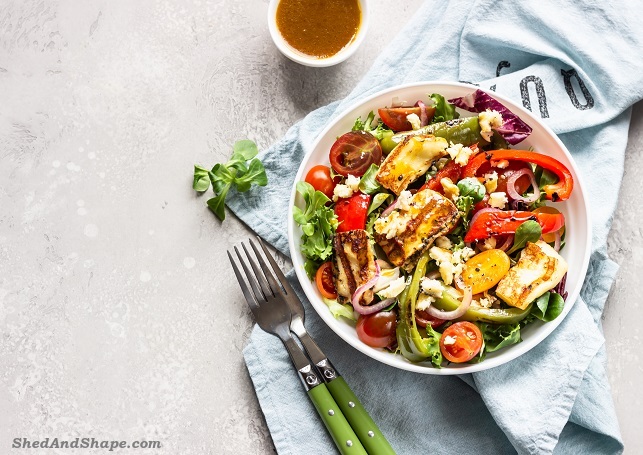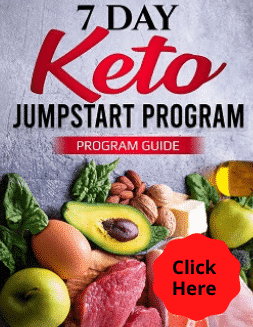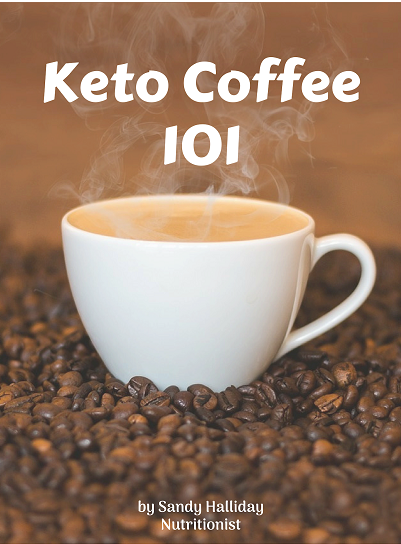The vegetarian keto diet sounds like a contradiction in terms because a keto diet is known for it’s plentiful meat meals. All that steak and bacon! But, it is perfectly possible to adapt the diet for vegetarians.
The diet is ideal for those who wanted to follow the principles of the keto diet but don’t want to eat meat nor get their fats from grass-fed meat or tallow for example.
As a low carb, high-fat diet, the ketogenic diet means that dieters have to eat mostly fats in exchange for carbs. Because of this, many people think that the diet is not suitable for vegetarians or vegans.
Related reading: Benefits of Fat for the Keto Diet
It’s important to note that fats are not only found in meat. In fact, the best fats to eat came from plant sources, such as nuts, seeds, coconuts, avocados and olives. Therefore, a vegetarian keto diet is definitely doable.
Related reading: How Much Fat Should I Eat on Keto?
If you’re thinking of following this diet, then read on to find out what you need to know about the vegetarian keto diet.
What is a Vegetarian Keto Diet?
Simply put, the vegetarian keto diet is a combination of a vegetarian and keto diet. As a plant-based diet, vegetarians avoid eating meat, seafood, and fish. But unlike vegans, vegetarians do eat animal products such as dairy and eggs.
On the other hand, the ketogenic diet is a high-fat, low carb diet. It limits the consumption of carbs to only 20 to 50 grams per day and most of the calories should come from fats.
Indeed, the keto diet is a godsend for meat lovers out there. But what happens if you follow vegetarianism?
According to Samantha Rigoli, a NY-based dietitian and founder of Healthy to the Core,
“Vegetarians can definitely do the keto diet, but it’s going to be a bit harder for them than for their non-vegetarian friends.”
The goal for a standard keto diet is to limit the consumption of carbs to around 10% of the total calories, while 15% should come from protein, and 75% would be fats.
Related reading: How Many Carbs To Eat To Lose Weight
Since vegetarians don’t eat meat, their fats and protein have to come from eggs, dairy, and some plant-based sources. It makes the diet somewhat restricted, but it’s definitely doable.
Plant-Based Keto Eating Plans
The keto diet can be incorporated into the vegetarianism lifestyle in many ways. In fact, there have been several versions of the keto diet that were designed for vegetarians. One of these is the Ketotarian Diet, which was created by Dr. William Cole.
Although this eating plan is mostly plant-based, followers are allowed to eat fish in moderation. This diet requires you to fast overnight and making sure not to eat at least three hours before bedtime.
Another version of the keto diet that may work for vegetarians is the KetoFlex Diet. It’s generally a plant-based diet that focuses on eating non-starchy vegetables that are low in carbs.
Meat is still allowed but only a limited amount. With this eating plan, you can still achieve all the benefits of a keto diet without having to eat meat. It’s suitable for vegans, pescatarians, and vegetarians.
Related reading: Pescatarian Keto – Is it Healthier than Regular Keto?
The Eco-keto Diet is also a good option for vegetarian keto dieters. Unlike the standard keto diet, this diet discourages the consumption of meat products. Instead, it focuses on eating plant-based proteins and fats, which minimizes the impact on the environment while still helping you to stay in ketosis.
So if you’re a vegetarian and you are thinking of following the keto lifestyle, you have plenty of eating plans to choose from. Of course, if you follow a more liberal form of vegetarianism, you will have a wider range of food choices, which can make following the keto diet less restricted.
How to Follow the Vegetarian Keto Diet
Although there are different types of vegetarian keto diets out there, the main goal is the same, and that is to reach the state of ketosis without having to eat meat.
The diet will consist of low carb vegetables, especially leafy greens, low-sugar fruits, lots of healthy fats and plant-based protein such as nuts and seeds. As mentioned before good quality eggs and dairy products can be included.
Regardless of the exact vegetarian keto diet plan that you have chosen, these tips should help you achieve your goals.
1. Restrict Carbs
Reaching the state of ketosis is very important in a keto diet. To get there, you need to limit your carb consumption and eat mostly fats and protein. Therefore, you need to avoid eating vegetables that are high in carbs, most especially starchy vegetables. You also need to avoid a lot of fruits, except for a few berries.
2. Eat Lots of Low-carb Veggies Every Day
What’s great about keto is that you can usually eat all you want as long as you avoid carbs. This helps you to feel full longer and avoid unhealthy cravings later.
It’s important to eat a lot of low-carb vegetables every single day on a keto diet and even more important on a vegetarian keto diet. The best ones are kale and spinach, zucchini, cauliflower, and broccoli.
Related reading: What Are the Best Low Carb Vegetables?
Related reading: Health Benefits of Kale and Spinach for Keto
3. Use Healthy Oils When Cooking
Another way you can get your fats in a vegetarian keto diet is through healthy oils. So when cooking food use healthy oils, such as coconut oil, avocado oil, grass-fed butter, or ghee.
When making salads you can use the same oils plus oils like extra-virgin olive oil, pumpkin seed oil, hemp seed oil. These oils are heat sensitive so should not be used for cooking although there is debate about olive oil as it’s used so much for cooking in the Mediterranean countries.
And it’s known that some brands of olive oil have adulterated it with sunflower or other vegetable oil although it’s not declared on the label so you have to be careful. You certainly don’t want to be cooking with unsaturated oil as it can be damaged by heat and become unhealthy.
Some health experts say that the health benefits of olive oil are destroyed when it’s heated so it’s best to reserve it for salads or drizzling on vegetables.
You can also use some of these oils when baking low-carb desserts.
4. Add Herbs and Spices to Your Meals
Make your vegetarian keto meals more appetizing by adding herbs and spices. They are also a great source of micro-nutrients and have very few net carbs. So stock up on basil, mint, oregano, rosemary, cinnamon, and other seasonings and spices.
Final Thoughts
Although the vegetarian diet has been linked to weight loss, it is still possible for vegetarians to become overweight. In fact, not all vegetarians are healthy. Many have deficiencies due to not fully understanding how to make sure they are getting all the nutrients necessary for good health.
Vegetarians tend to load up more on carbs, which is not ideal for good health. This is why some vegetarians are now choosing to follow the vegetarian keto diet.
This low carb, high-fat diet will not only help you to lose weight but should also help you to stay healthy if you take care with it. You should note however that no long term studies have been done on the diet.
Following the vegetarian keto diet may not be easy at first, but if you follow the tips above, you should be able to reach ketosis and start losing weight. You can also benefit from its many health benefits, such as good blood sugar control, improving heart health, and many more.










